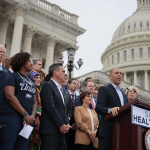[ad_1]

In the world of finance, a Ponzi scheme is a house of cards — a system in which early investors are paid with money from new participants, not real profits. Eventually, the influx slows, the illusion collapses, and only the insiders walk away unscathed. While it’s considered a form of fraud in the private sector, what happens when the federal government adopts a similar logic — legally, openly, and at scale? This question looms large when evaluating the economic legacy of Donald Trump. Although his administration claimed to champion prosperity for all Americans, many of his policies — particularly the 2017 Tax Cuts and Jobs Act — bear striking resemblance to the structure and logic of a Ponzi scheme. How so?
Front-loaded gains, back-loaded costs: Trump’s 2017 tax cuts delivered immediate rewards. Corporations saw their tax rates slashed from 35% to 21%, and the wealthiest Americans enjoyed substantial breaks. Markets surged, and headlines touted a booming economy. But this apparent success came at a cost — one deferred to future generations. The national debt ballooned by nearly $8 trillion during Trump’s term. Like a Ponzi scheme, these benefits were not funded by sustainable growth or productivity gains, but by borrowing. The early “investors” — corporations, the wealthy, and the politically connected — reaped the rewards. The bill will be paid by taxpayers down the line, through higher deficits, inflationary pressure, and the gutting of social services.
If you purchase a product or register for an account through a link on our site, we may receive compensation. By using this site, you consent to our User Agreement and agree that your clicks, interactions, and personal information may be collected, recorded, and/or stored by us and social media and other third-party partners in accordance with our Privacy Policy.
[ad_2]
Source link







